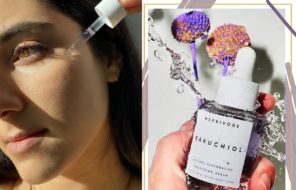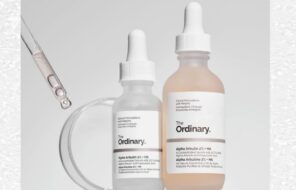Every one of the skincare acids deserves a little bit of recognition, and lactic acid is no other. While the name lactic acid brings to mind dairy, milk, cheese, or maybe even yogurt, this acid actually comes from very diverse sources, and it has fantastic benefits to the skin. It’s time to learn about this wonderful skincare acid and to consider if it’s something you should add to your routine!
In this article, we explain what lactic acid is, where it comes from, and what the benefits of lactic acid for skin are. We’ll help you choose the best lactic acid products for your skin’s needs, and we’ll also make sure that you know how to use lactic acid safely and properly, so that you can give your skin that healthy glow!
In this article:
- What Is Lactic Acid?
- What’s the Difference Between Lactic Acid and Glycolic Acid?
- Lactic Acid Benefits for Skin
- Are Side Effects from Lactic Acid Possible?
- How to Choose Lactic Acid Products for Your Skin Type
- How to Introduce Lactic Acid Into Your Skincare Routine Safely
- The Difference Between Using Lactic Acid Products at Home or Doing a Lactic Acid Peel at the Salon
- How to Use Lactic Acid Products
What Is Lactic Acid and How Does It Work?
Lactic acid is a type of alpha-hydroxy acid (AHA). Lactic acid occurs naturally in milk, various kinds of fruit, and even in the human body. If you have ever experienced sore muscles while working out, you have lactic acid to blame.
However, the lactic acid used in skin care is usually created when lactobacillales, or lactic acid bacteria, are introduced to some sort of carbohydrate. The bacteria cause fermentation, and the result of the fermented carbohydrate is lactic acid.
When lactic acid is dry and solid, it is white, but once it is dissolved in water, it turns clear and invisible. Unlike salicylic acid, lactic acid as well as glycolic acid do not dissolve in oil – they only dissolve in water and ethanol.
Much like other forms of AHA, lactic acid works by melting down the naturally-occurring oils that connect dead skin cells to each other. As the lactic acid penetrates the top layers of the stratum corneum (the top layer of the skin that is made up of dead skin cells), it effectively dislodges and forces the skin to shed those top layers of dead skin, revealing the younger, healthier skin that is below it.
This isn’t to say that lactic acid will reveal live skin cells – this doesn’t occur with over-the-counter lactic acid products, nor is it a desirable result. Instead, it reveals newer layers of the stratum corneum that appear healthier and brighter.
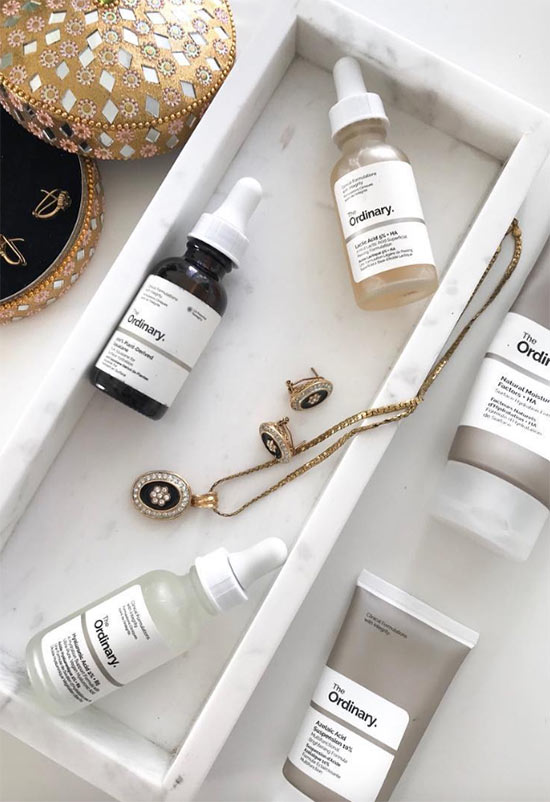
When compared to glycolic acid, lactic acid has a larger molecule, so it doesn’t penetrate quite as deeply into the skin. This makes it a more gentle option for chemical exfoliation that is less likely to irritate the skin. In general, lactic acid has to be used in a formula with a pH between 3 and 4, and a concentration between 4% and 10% in order to adequately exfoliate the skin.
Additionally, lactic acid works as a humectant. It has the ability to attract moisture from the air into the skin, which helps to hydrate the skin. This is why you will often see lactic acid or its sodium salt (sodium lactate) show up in skincare formulas that aren’t meant to exfoliate the skin, either due to pH or concentration of acid.
What’s the Difference Between Lactic Acid and Glycolic Acid?
Lactic acid and glycolic acid are both alpha-hydroxy acids, and they behave very similarly. Both trigger dead skin cell shedding by melting the lipids that connect our dead skin cells to our faces like glue. Both also have a humectant effect that pulls moisture into the skin and keeps it hydrated, although lactic acid is considered the more hydrating of the two.
However, glycolic acid is a smaller molecule. Because of that it can penetrate into the skin deeply and easily. This makes it the better exfoliator, but it also makes it much likelier to cause irritation.
On the other hand, lactic acid has a slightly larger molecule. It’s still an excellent exfoliant, but it’s not quite as strong as glycolic acid. Because of that it is less likely to irritate the skin, so it’s much better for those with sensitive skin.
Lactic Acid Benefits for Skin
As a humectant, lactic acid pulls moisture into the skin, which helps to hydrate and plump it up. This is why it is so frequently used in serums and moisturizers, even when the formula doesn’t exfoliate the skin.
As a chemical exfoliant, lactic acid maintains healthy functioning in the skin and prevents dead skin cell build-up. The exfoliation also encourages new, healthy skin cells to reproduce, which in turn can fix all kinds of skin issues in the long term.
This can help with specific cosmetic needs, such as:
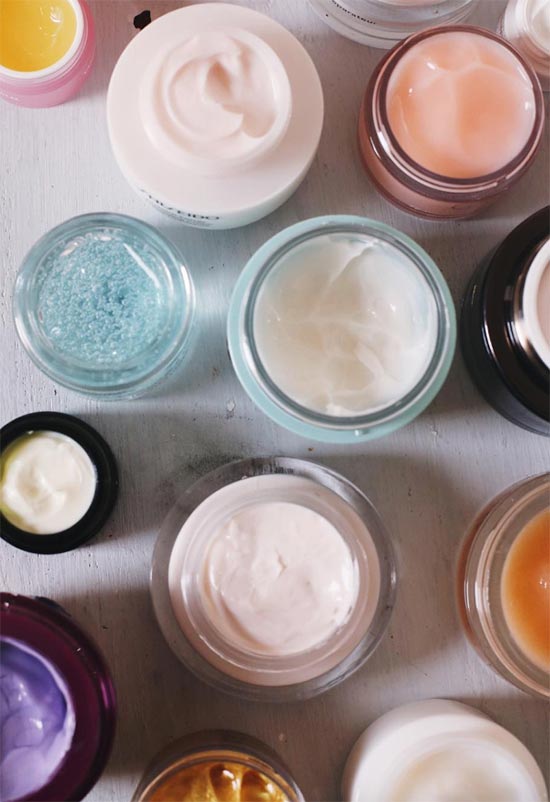
- Eliminating dry, flakey skin by allowing it to shed. This leaves the skin looking smoother and feeling softer.
- Allowing moisturizers and serums to penetrate and moisturize the skin better, by getting rid of the dead skin cells that block them from getting through.
- Brightening the skin and reducing hyperpigmentation by removing dull, damaged, and pigmented skin. This can help fix all kinds of pigmentation issues including post-inflammatory hyperpigmentation, melasma, sun spots, and more.
- Improving texture issues in the skin. Dead skin build-up tends to emphasize any texture issues in the skin, including roughness, large pore size, and fine lines, so the exfoliation helps reduce it.
- Eliminating whiteheads and blackheads by preventing the build-up of dead skin that clogs the pores. This same process also helps to seriously reduce the recurrence of acne breakouts.
Are Side Effects from Lactic Acid Possible?
As with any powerful skincare active, there are some side effects to lactic acid that you absolutely must be aware of if you intend to use it. After all, with great power comes great responsibility.
I’ve listed the side effects of lactic acid skincare products in order from the most serious to the least serious.
Sun Sensitivity
Lactic acid, like most chemical exfoliants, can increase the skin’s sensitivity to the sun. This means that if you regularly use chemical exfoliants, your skin will experience sunburn more quickly following sun exposure.
You will also be more prone to premature aging and hyperpigmentation caused by sun exposure, and it may even increase your risks of skin cancer. Make sure to use sunscreen regularly and to avoid excessive sun exposure when using lactic acid as well as other AHAs, in order to avoid these issues.
Acid Burns
Acid burns may occur if you use a lactic acid peel at a very high strength, or if you combine lactic acid with too many other chemical exfoliants. Acid burns can look almost exactly like other kinds of burns, and their severity may vary.
Acid burns can also occur if you apply lactic acid to your skin and then occlude it with some sort of patch or bandage. If you only use over-the-counter chemical exfoliants and you follow the use directions properly, then you are unlikely to suffer from acid burns.
Over-Exfoliation
Over-exfoliation is a serious risk that comes with any face scrub or exfoliant. The skin can become tight, red, and irritated, or it can suddenly peel or flake excessively.
Over-exfoliation can occur if you use lactic acid more frequently than your skin can tolerate, or if you use it in conjunction with too many other chemical or physical exfoliants. You can avoid over-exfoliating your skin by introducing lactic acid into your routine slowly, as I outline below, and paying close attention to your skin.
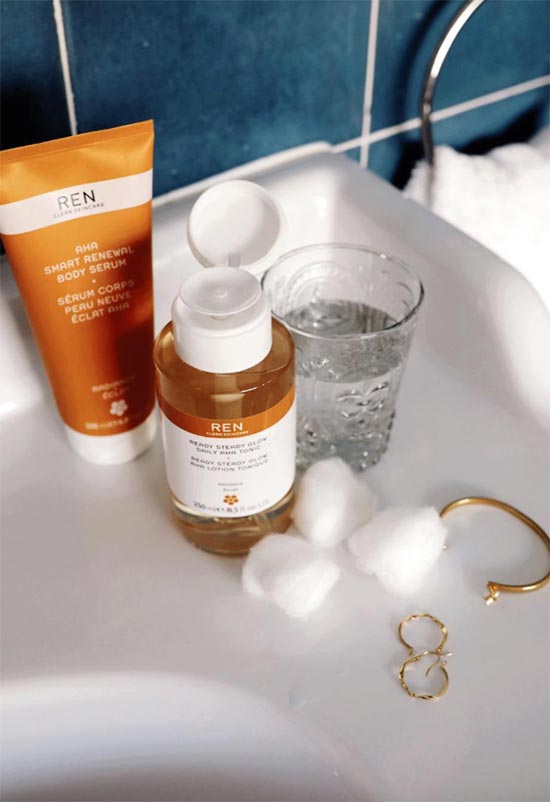
Purging
As with any product that resurfaces the skin, lactic acid can cause skin purging. Purging is a breakout that normally occurs a week or two after you’ve started a new, resurfacing skincare product.
As the top layers of the stratum corneum are removed, any breakouts that were previously hidden below the skin suddenly come to the surface. This breakout usually disappears after another two weeks, and the skin goes back to normal.
If the breakout doesn’t go away then it is possible that your new product isn’t working for you, and you should stop using it.
Stinging
Lactic acid, especially the first few times it is used, can cause a slight stinging sensation. This sensation begins the moment the lactic acid is applied, and will fade away a few minutes up to half an hour after it’s been used.
After regular use the skin becomes used to the acid, and the stinging sensation stops completely. If the stinging lasts for longer than that, then lactic acid might not be appropriate for your skin.
How to Choose Lactic Acid Products for Your Skin Type
Here is how to choose the right lactic acid products for you, based on your skin type and concerns:

Lactic Acid Products for Oily Skin
If you have larger pores, and your skin produces a lot of oil, you may not consider lactic acid as your first choice. People with oily skin usually opt for salicylic acid as their go-to exfoliant, since salicylic acid can break down and penetrate through oils much better than lactic acid products.
However, if you cleanse your skin properly before using, lactic acid can totally work for your skin! You can opt for formulas that include both lactic acid and salicylic acid for a very thorough exfoliation.
Lactic acid comes in a lot of non-greasy oil-free formulas, including toners, serums, and even moisturizers! You can even opt for clay-based masks that include lactic acid, as these will help to mattify and clarify your skin.
Lactic Acid Products for Normal and Combination Skin
Those with normal skin who have medium-sized pores and normal oil production can definitely opt for lactic acid as their exfoliant or as an ingredient in their moisturizer. The same applies to those with combination skin, whose skin produces more oil in some parts of the face and less oil in others.
Lactic acid is a gentle enough exfoliant that can work for anyone, and basically any product with lactic acid can work for those with normal skin. You may want to avoid anything too drying, like clay-based masks with lactic acid, but even that can work in the summer when those with normal skin might get a little shiny.
The great thing about lactic acid skincare products is that they tend to be balanced, with an even mixture of hydrating skincare ingredients and pore-tightening skincare ingredients. You can even opt for products that combine lactic acid with other skincare acids, based on your needs.
Lactic Acid Products for Dry Skin
If you have smaller pores and little to no oil production, then lactic acid is the perfect ingredient for you. Lactic acid does a fabulous job of softening dry skin, hydrating it, and improving its ability to absorb moisturizing ingredients.
Look for lactic acid in formulas that also contain other hydrating ingredients like hyaluronic acid. Toners with lactic acid might be a little too drying for your skin, but serums, peels, and moisturizers with lactic acid should all work very well. Always make sure to moisturize your skin well after using lactic acid skincare products.
Lactic Acid Products for Sensitive Skin
If your skin turns red and irritated at the drop of a hat, then you probably have sensitive skin. Since lactic acid has fairly large molecules, it happens to be one of the least irritating chemical exfoliants, and therefore it is one of the best ones for those with sensitive skin.
It is better to not overwhelm your skin with a high dose of lactic acid, so look for products intended for daily use with a lower percentage of lactic acid. Introduce them into your routine slowly and carefully.
Products that also contain skin-soothing ingredients like green tea, urea, or probiotic fermented extracts are going to have a wonderfully calming effect on your skin.
Try to avoid products that combine lactic acid with too many other chemical exfoliants, as these can be more strongly exfoliating than you might expect. If your skin is extremely sensitive to leave-on chemical exfoliants, you can try using a cleanser with lactic acid instead.
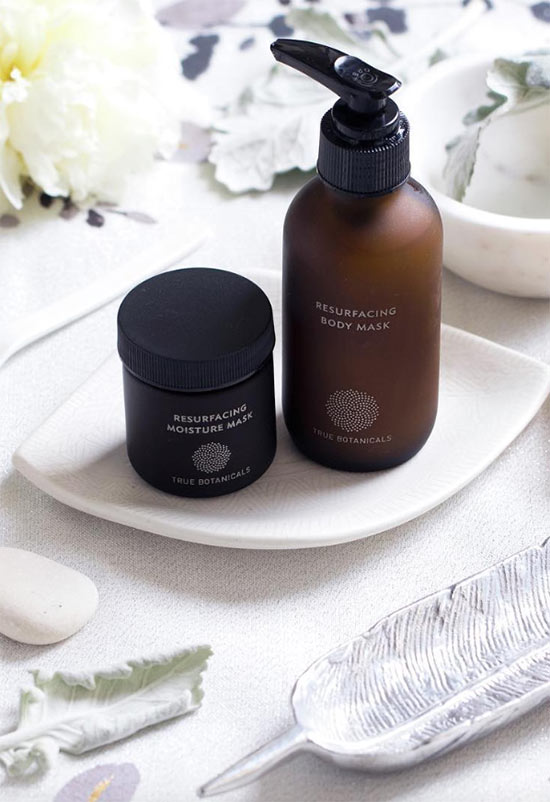
Lactic Acid Products for Premature Aging & Hyperpigmentation
The key to eliminating signs of premature aging like fine lines, wrinkles, and hyperpigmentation is to look for products that’ll do three things: get rid of the old, damaged, dead skin cells (via exfoliation, which, surprise surprise, lactic acid is excellent for), protect the existing skin cells that are not being exfoliated, and try to speed up the skin cell renewal process under the surface.
This is why you want to use lactic acid skincare products that contain protective antioxidant ingredients like all kinds of botanical extracts and vitamins, as well as skin-renewing ingredients like peptide complexes or vitamin A.
If you’re specifically dealing with hyperpigmentation, then you’re looking for vitamin C, licorice root extract, and niacinamide. Additionally, you want your lactic acid products to come in a more moisturizing formula as in a serum or moisturizer, although you can also just moisturize your skin after exfoliating.
Lactic Acid Products for Acne-Prone Skin
Normally, salicylic acid is the chemical exfoliant that is recommended when people try to treat acne breakouts. However, salicylic acid doesn’t work for everyone, and sometimes it can cause allergies.
Lactic acid can also help with acne breakouts, as any gentle exfoliation can help prevent the dead skin build-up that ultimately clogs pores. There are many products out there that include both salicylic acid and lactic acid that you can try out.
Most products with lactic acid will work for your skin, since they tend to be oil-free and to not include comedogenic ingredients. However, you might prefer something with a lighter texture like a toner, or you might want to try a mask with lactic acid as well as high absorbent clays.
How to Introduce Lactic Acid Into Your Skin Care Routine Safely
There are two parts to safely introducing lactic acid to your skin. The first part is conducting a patch test, which is a method you should utilize with every new skincare product you want to try. The patch test will let you know if you have an allergy to your new product before you slather it all over the face.
To do a patch test, clean a small area of skin like your forearm or inner tricep, and apply the new product. Do this for a few days in a row (assuming this is a daily-use product). If your skin fares well with no rashes or irritation, then you’re good to go with the next part!
Once you’ve conducted the patch test you can now start using lactic acid on your face. You want to introduce your lactic acid product slowly, assuming that it is a resurfacing product.
If you’re using a non-exfoliating product with lactic acid, you don’t need to worry about this part. This is especially important if you haven’t used chemical exfoliants before.
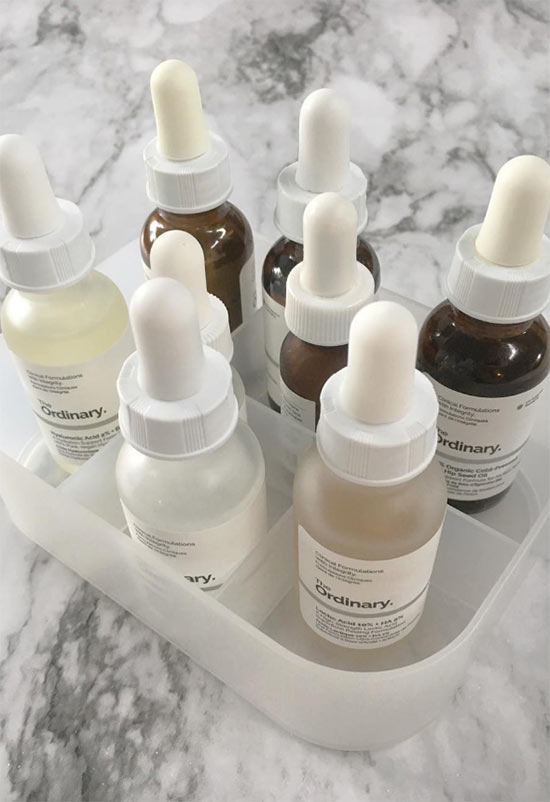
Start by using your lactic acid skincare product once a week. The following week use it twice a week. The week after that use it every other day.
As you do this pay close attention to signs of over-exfoliation, like irritation, tightness, or extreme skin peeling. If you notice any of those signs, then scale back how often you use your lactic acid products.
If everything seems to be fine, you can keep using your lactic acid products as often as once a day. This slow, gradual process will ensure that your skin is never overwhelmed!
The Difference Between Using Lactic Acid Products at Home or Doing a Lactic Acid Peel at the Salon
While this article focuses on the lactic acid skincare products that you can use at home, you also have the option of going to the beauty salon for a lactic acid peel.
In my opinion, using lactic acid at home makes more sense. For the same cost as a peel you can buy one product, and use it nearly every day for months. Since we need to exfoliate our skin regularly, I think this makes more sense for most people.
Lactic acid peels at the salon will usually use lactic acid at a very high concentration: between 20% and 60%, depending on the salon and the aesthetician. In most countries, it is not possible to find peels with such high concentration of lactic acid over the counter.
At these concentrations the lactic acid gives a much stronger exfoliation that might leave the skin looking red and feeling raw for a few hours or days after the peel was done. If done two weeks apart for a few months in a row, lactic acid peels are a great way of quickly taking care of serious issues that have developed over time like scarring or hyperpigmentation.
If you’re looking for simple maintenance and regular exfoliation, stick to leave-on lactic acid products. If you would like significant skin resurfacing in order to improve a specific issue, head to the spa. The best results will come from a combination of in-salon treatments and a great routine at home.
How to Use Lactic Acid Products
Depending on the type of lactic acid product you get, you have these two ways of using it:
Leave-On Lactic Acid Products
Since most leave-on lactic acid products come in the form of toner or serum, these are the instructions for introducing those into your skincare routine. If your lactic acid product comes in the form of a cleanser, then simply use it as you would any other cleanser.
- Begin by making sure that your skin is perfectly clean. Lactic acid does not penetrate through oil, so oil cleansing won’t be a sufficient cleansing method. Either use a gel or foam-based cleanser after oil cleansing, or skip oil cleansing altogether and opt for any oil-free cleanser. It is best to use a cleanser with a pH of 5.6 or less.
- If you don’t know your cleanser’s pH or if it’s above 5.6, then use a pH-adjusting toner that will balance your skin.
- If you use any other actives that are active at a low pH, like a vitamin C serum with ascorbic acid or a salicylic acid product, apply them next. You may choose to wait 10-20 minutes to give them extra time to work.
- You’re now ready to apply your lactic acid product! If you’re using a toner, either pour a bit unto a cotton pad and wipe your face with it or simply splash a bit into your hands and pat into your skin. If you’re using a serum, pour out a nickel-sized amount and gently press into your skin. Apply it everywhere except the lips and the eye area. To give the product time to work, wait 10-20 minutes.
- Finish off your skincare routine with other products you use: essences, serums, moisturizers, and balms.
- Remember to always finish with at least a quarter teaspoon of SPF in the daytime, since lactic acid makes you much more sensitive to sun exposure.
Lactic Acid Peels & Masks
Some lactic acid products are meant to be used only a few times a week, and they should be rinsed off after they’ve had time to work. These include peels, masks, and scrubs with lactic acid.

- As always, begin with cleansed skin. Opt for a cleanser with a low-pH that is completely oil-free, as oil disrupts lactic acid from penetrating into the skin. Make sure all of the cleanser is thoroughly removed from your skin.
- You may choose to use a pH-adjusting toner, especially if your cleanser’s pH is higher than 5.6 (or if you don’t know what its pH is).
- You’re now ready to apply your lactic acid product! Since weekly products usually have a higher percentage of acids (especially peels), you want to make sure that you get a very even and thin application. You can achieve this by applying the peel with a mask brush or a clean foundation brush. Swipe it on your skin in upward motions, making sure not to go over any areas of the face twice.
- You don’t have to be as careful with masks and scrubs that contain lactic acid – apply them with your hands, and you can even massage them in a little bit.
- Let the mask or peel sit as long as the package recommends. This will usually be between 5 and 20 minutes.
- Do not apply the lactic acid skincare product around the eye area!
- Rinse away the peel or mask with cool water. You can use a damp washcloth or cotton pads to help the mask along and to make sure everything is totally gone.
- You can now apply a second mask that will be either nourishing or mattifying, or you can simply finish off with the rest of your skincare routine. Apply your products in the following order: hydrating toners, essences, serums, moisturizers, and balms.
- Always apply a quarter teaspoon of sunscreen in the daytime, as lactic acid makes your skin more susceptible to sun damage!
Photos via @emmahoareau, Instagram


